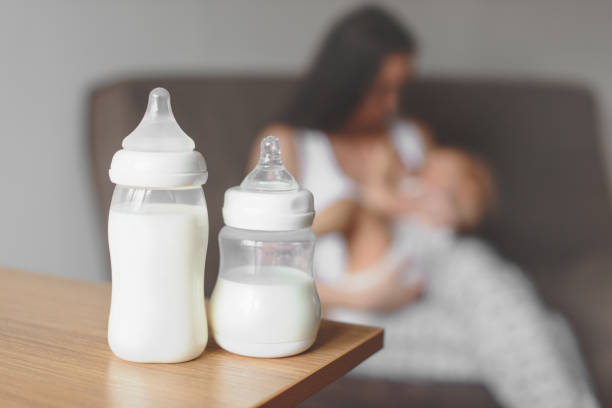When To Wean
The latest (2022) policy statement from the American Academy of Pediatrics (AAP) recommends exclusive breastfeeding for the first 6 months, continuing to breastfeed along with complementary foods starting at 6 months, for as long as mutually desirable up to 2 years or beyond. But the actual weaning process is not cut & dry as the statement from the AAP would have you think. There are mental, emotional, & physical changes not for one person but for two people to navigate.
Baby-led Weaning
The introduction of solid foods around 6 months is the beginning of the weaning process. For the first year, the majority of nutrients still come from human milk, while the introduction of solids foods is just for fun, as the child explores various tastes, textures, & newfound abilities. Gradually, as the intake of food increases, the intake of breast milk decreases. How fast or slow this process is depends on the personality of the baby. Eventually, children will let you know when they are ready to stop breastfeeding.
Mother-led Weaning
When you feel ready to wean, (& you don’t need to justify what those reasons are), it is best for both you & babe to do it gradually – definitely not cold turkey. Weaning too quickly can set you up for engorgement, plugged ducts & mastitis, along with moodiness, emotional upheavals, perhaps even depression, from the fluctuating hormones. For the child, the sudden change can result in anxiety, clinginess, & night waking.
How to Wean
It takes a few days to either build up or take down a milk supply – specifically how many days (2, 5, 7) varies from person to person. Ideally take away one feeding that babe wouldn’t miss & replace with a different food or activity (depending on the age of the child), & do not remove another feed unless you feel comfortable. If engorgement results, remove just enough milk to feel comfortable. Leaving milk in your breasts prevents more milk from being produced. When ready, take away another feeding, leaving the nighttime & napping ones for last. Or perhaps, you would like to continue those feedings for parenting reasons – it does make it easier to get the child to sleep. Weaning doesn’t have to be all or nothing – it can be whatever you want it to be!
Supplementary Feedings
If the baby is less than a year, you will need formula or a stash of expressed milk, either in a bottle or sippy cup. After one-year, solid foods take precedence, & you can start whole milk or fortified unsweetened soy. There is no specific milk you need, unless medically indicated.
However or whenever you decide to wean, it can be a stressful process, so starting the wean during a move to a new house would not be recommended. If you have any questions, reach out to an IBCLC for guidance. A customized care plan can be devised to help you navigate the weaning phase of lactation.


